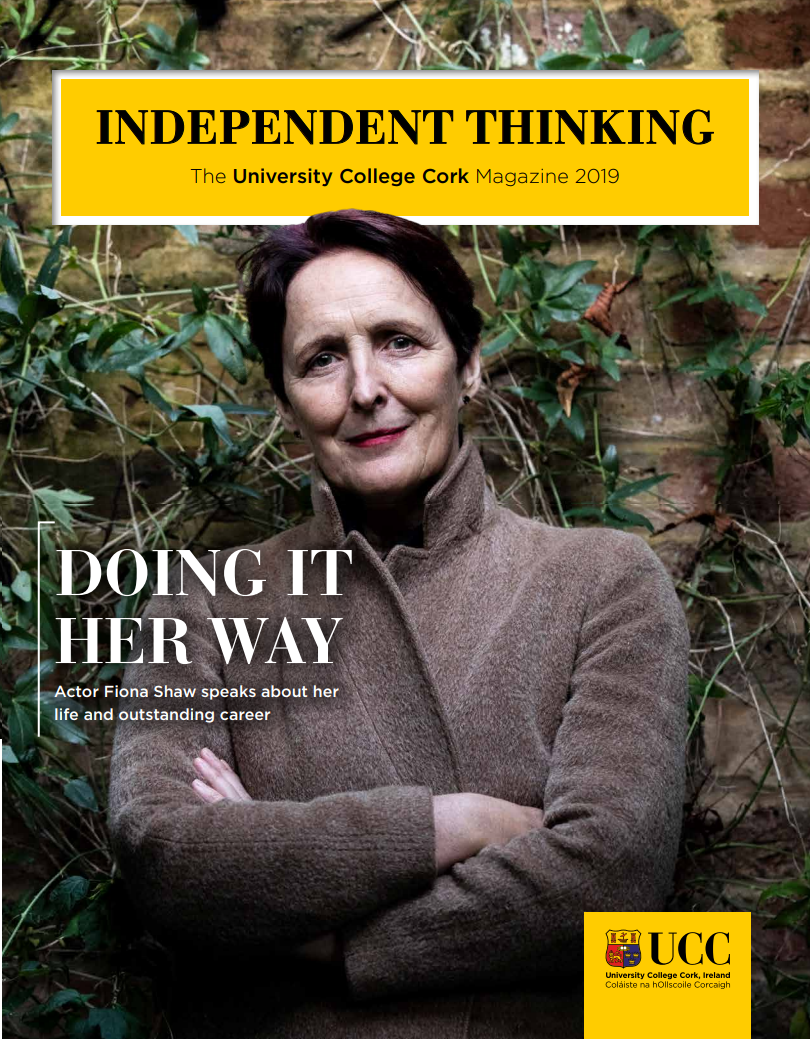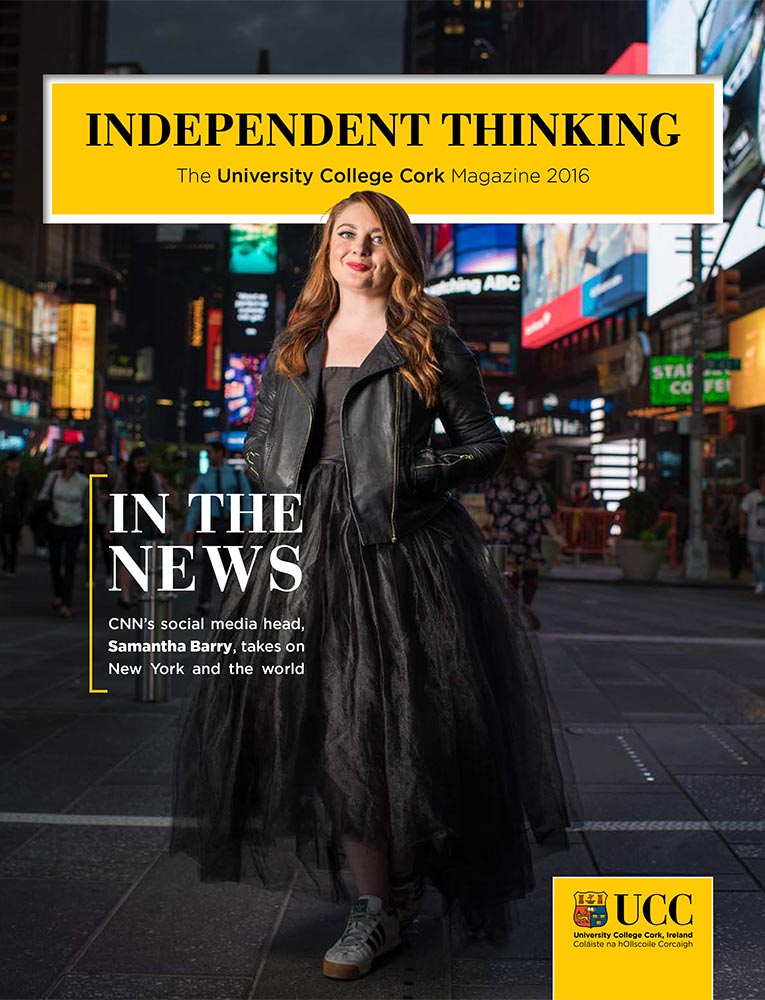On the Shoulders of Giants
‘If I have seen further, it is by standing on the shoulders of giants.’ The famous statement, attributed to Sir Isaac Newton, embodies the spirit of scientific advancement shown by two APC Microbiome Ireland researchers at UCC, Julie Callanan and Stephen Stockdale, when they discovered thousands of rare RNA viruses. To acknowledge the foundational research of Professor John Atkins, upon which their work built, they named a family of the newly discovered viruses after him, as Nancy Hawkes discovered.
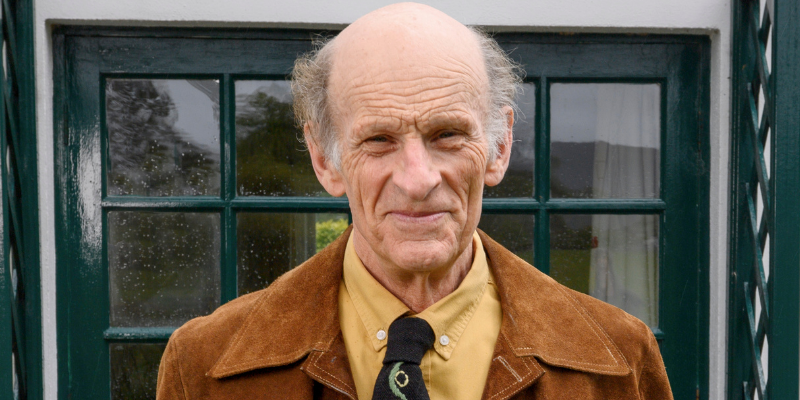
Scientific research is often misinterpreted as a cold, rational endeavour, full of numbers and calculations. But of course, scientists are humans and follow the example and inspiration of others they admire. As in many other fields of human endeavour, when talented scientists are provided with the right resources, encouragement and mentorship, great things happen.
UCC early-career researchers Julie Callanan and Dr Stephen Stockdale, working under the supervision of Professor Colin Hill, Principal Investigator at the Science Foundation Ireland Research Centre, APC Microbiome Ireland, recently identified over a thousand new RNA viruses. Unlike other well-known RNA viruses like COVID-19, SARS, Ebola, and influenza, these viruses infect bacteria. Their discovery dramatically increased the number of known viruses of this type almost a hundred-fold. Their research into these tiny yet incredibly complex organisms has been published in several of the world’s most prestigious scientific journals.
Their research builds on the work of UCC’s Professor John Atkins, who was one of the pioneering researchers into RNA viruses in the late 1970s. Among many achievements over a distinguished career, Professor Atkins is a member of the Royal Irish Academy and recipient of its Gold Medal Award (2007) and was the first appointed Director of Life Sciences for Science Foundation Ireland (2002). He is currently a research professor in UCC.
Professor Atkins, from Dunmanway, County Cork, originally graduated from Trinity College Dublin in 1965. His research career led him to the Cold Spring Harbor Laboratory on Long Island, New York. In the 1970s, when working on mapping adenovirus genes, an unexpected result with a model mRNA led to his collaborating with Professor Joan Steitz of Yale University. “Joan and I were actually trying to find something else, but by complete luck we stumbled across how to ‘unlock’ these little RNA viruses, and we published a paper on our discovery,” John remembers.
“Although my research focus has moved on since then, there have been huge technological developments in the meantime which have allowed others to do further research. Julie, Stephen and Colin have reopened the whole area by discovering thousands of the viruses. It was very generous of them to propose that one of the families of the new viruses would be named after me,” he says, with characteristic modesty.
“The team approached me out of the blue. I was really surprised and very pleased,” says Professor Atkins. “To Julie, Stephen and Colin, I simply say: ‘thank you, thank you, thank you!’”
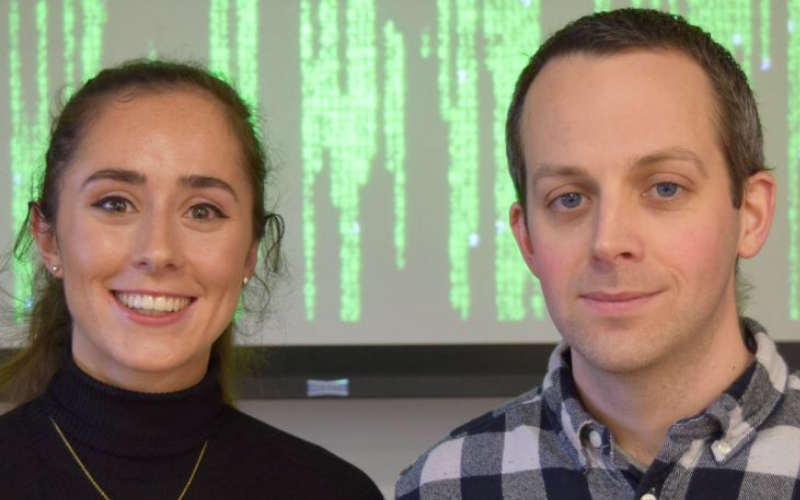
Originally from Innishannon, West Cork, Julie Callanan grew up with a passion for exploring new ideas. Her parents, Ger and Mags, encouraged her to follow her interests and she applied to study Biological and Chemical Sciences in UCC in 2013.
“I absolutely adored studying everything from neural pathways to sponges, but my true interest was in microbiology,” Julie remembers. “Throughout my studies, I knew that I wanted to do a PhD. I love the prospect of uncovering something that was previously unknown. During my bachelor's degree, I was fortunate enough to spend several weeks in the phage laboratory of Professor Colin Hill. It was during this time I knew I wanted to do my PhD in his lab, both for the fascinating science that was happening there and the incredible team. With hard work, luck and a great lab group, anything is possible,” she says.
Julie and her collaborator, post-doctoral researcher Stephen Stockdale, discovered over a thousand RNA genomes, rather than the small number previously known.
“Bacteriophage, or phage as they're commonly known, are viruses that target and infect bacteria. Most of the research and information about these viruses involve one type – those that contain DNA inside their shell. Prior to our work there was very little known about a specific portion of these phages, those that did not have DNA, but instead have RNA inside. Stephen and I set out to investigate if we could find more of these RNA phages, and stumbled upon a major discovery – our research expanded the number from tens to over a thousand,” Julie explains.
The research team published their ground-breaking findings in 2020, in some of the world’s most prestigious peer-reviewed science journals.
“The world has experienced the impact of RNA viruses during the past two years of COVID-19, and the critical role that research plays in understanding their biology. It has enabled us to improve our ‘armour’ and respond more quickly to future outbreaks. Given that these viruses were under-represented in studies, their role in human health has yet to be defined. It’s exciting to see this field expand, and I hope more research will be done in this area,” she says.
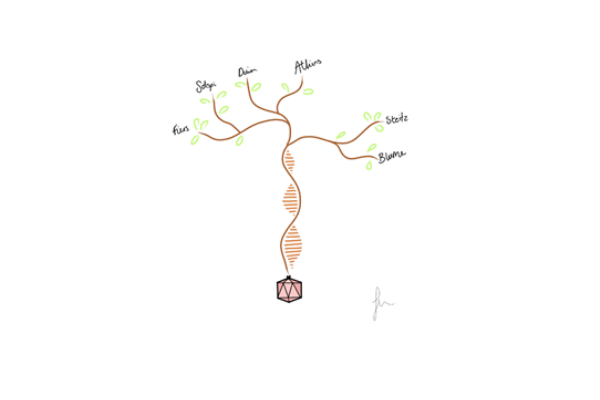
Julie recalls meeting Professor Atkins in the first year of her PhD: “I knew him by reputation to be a phenomenal scientist, and he generously offered to help me any way he could. He was delighted to see these phages dusted off and brought back into the limelight. His original research revolutionised the science by highlighting the complexity of these deceptively simple entities. Acknowledging his pioneering foundation to the area was an obvious choice for us.”
Julie and Stephen went on to help the International Committee on Taxonomy of Viruses (ICTV) develop a new naming system for the new viruses.
“We set about completely reworking and restructuring this entire group of viruses,” Julie elaborates. “This work offers a framework for all future expansions of the viruses. It also provides a foundation and tool that people can use to explore these phages and the roles they may serve in human health, since quite a number of these viruses are present in the intestines of all of us.”
In recognition of Professor Atkins’ foundational work and his contribution to science, Julie and Stephen named one of the six new branches of this new virus taxonomy after him. The remaining five branches were named after other “giants” in their field of research, including John’s earlier collaborator, Professor Joan Steitz.
Professor Colin Hill, who supervised Julie and Stephen’s research, was himself a student of Professor Atkins.
“John Atkins was one of my lecturers when I was an undergraduate in UCC, many years ago. His enthusiasm for research was inspiring. John was not quoting from textbooks, he personally knew the giants of the field whose work he was citing,” Colin remembers.
“His own research was making cutting-edge contributions from this (at the time) small university in Ireland. He was competing and contributing on a world stage and continues to do that to this day. I have not met a better scientist in my career, and so it is thrilling to have played a role in having this viral family dubbed the Atkinsviridae by some of the new generation of UCC scientists making cutting-edge breakthroughs of their own.”
For further information, visit UCC's Research and Innovation website.

